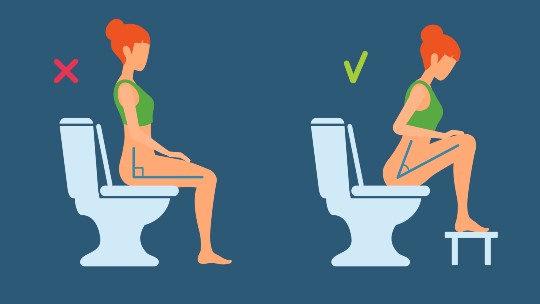We urinate without thinking about it. If we’re between meetings or short on time, pushing our pee feels normal and necessary. However, according to the National Association for Continence, always pushing can lead to problems such as pain when urinating, an overactive bladder, and even a prolapse, where the pelvic floor muscles weaken and a pelvic organ (the bladder, uterus, or rectum) collapses into the vaginal canal.
To get a better understanding of this important topic, we spoke to pelvic floor physical therapist, Summer Reynolds, D.P.T., who discussed pelvic health and how to urinate correctly.
Everyone can benefit
Reynolds, who has a doctorate in physical therapy, helps patients with urgency issues (the feeling of needing to urinate), pelvic pain, pain due to sex, bladder or bowel incontinence, and change-of-life events such as pregnancy, having a baby, and menopause. “I think everyone could benefit from pelvic floor therapy at some point in their life,” says Reynolds. “And not just women. Men can have similar pelvic floor issues and may need to seek care when having prostate complications.”
A right and a wrong way to pee
“The best way to empty your bladder, or bowels, is to simply breathe and relax. Specifically, relax your pelvic floor and belly,” Reynolds says. “Take your time. Take a breath. Your organs will take care of the rest.”
If you have trouble relaxing, try using a stool under your feet. “This will place your pelvic floor in a more-relaxed position,” Reynolds says. “And never hover over the toilet or push. This can lead to pelvic floor issues.”

It's also important to empty the bladder to prevent a urinary tract infection. “If you have issues with urine retention, you may need to empty your bladder twice,” says Reynolds. “Stand up and sit down again. Lean forward then lean back on the toilet. See if any more urine comes out.”
Leakage isn’t normal
“While it may be common for people to leak urine – up to 60% of women will leak at some point in their life – it isn’t 'normal,'” Reynolds says. “Despite the ads for adult diapers, pads, and liners, we shouldn’t leak at any age. If you do, seeing a pelvic floor physical therapist can help you regain control and avoid spending money on temporary solutions.”
Kegels: Do they work?
“Pelvic floor contractions, also known as Kegels, can be useful in strengthening the pelvic floor,” says Reynolds. “But they aren’t for everyone. For some people, the tissues of the pelvic floor are actually too tight and doing pelvic floor contractions may make things worse.” She likens it to jaw-clenching exercises to someone who grinds their teeth. “The key,” she says, “is learning how to relax the pelvic floor and squeeze it when you need it.”
You’re not alone
Some people may feel nervous about seeing a pelvic floor physical therapist, whether they’re anxious or don’t know what to expect. “Our office has private rooms so we can discuss your concerns in full confidentiality,” Reynolds says. “Similar to a gynecologist, we assess your situation.” That may include an internal exam. “Depending on what we find, whether weakness, tightness, or pain, we can teach you how to relax or better engage your pelvic floor muscles,” she says. “We’ll likely show you how your breath should work with the pelvic floor and not against it.” She’ll also address the rest of the body and how posture, daily activities, old injuries, and habits affect the pelvic floor.
Reynolds believes that knowledge is power. The more people understand their bodies, the more comfortable they are asking difficult questions or having discussions about sensitive topics. “You’re not alone in your pelvic floor concerns and there’s no need to feel embarrassed or ashamed,” Reynolds says. “We’re here to gently and safely help you navigate toward your pelvic floor goals.”




